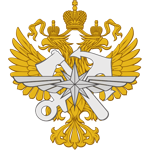Irina Al. Grebenkina, Svetlana Al. Grebenkina, Alla L. Blagodir. The current status and development trends of the infocommunication transport infrastructure in the Russian Federation
UDK: 656:005.932
Irina Al. Grebenkina - Candidate of law, associate professor of the department of Civil law and Procedure of M.M. Speransky Law faculty in the Institute of Law and National Security of RANEPA, senior lecturer of the department of Civil Law of the Kutafin Moscow State Law University (MSAL)
Svetlana Al. Grebenkina - senior lecturer of the department of the Analysis of Risks and Economic Security of the Financial University under the Government of the Russian Federation
Alla L. Blagodir - Doctor of Law, professor of the department of Labour Law and Social Security Law at the Kutafin Moscow State Law University (MSAL)
Abstract. Despite the recognition of the importance of the digital transformation of transport infrastructure as the basis of life safety, social and economic development of the country, the technical, legal and financial regulations of the digitalization of the transport complex, a detailed assessment of the impact of digital transport technologies on social and economic processes in modern society remain completely unexplored. The new challenges of globalization, integration and digitalization of the global economy necessitate the permanent improvement of transport infrastructure, the growing demand for the development and use of highly automated vehicles in recent years. The current paper has estimated the current state of the infocommunication transport infrastructure in Russia based on the analysis of statistical data, has identified the advantages and key system-wide problems of the domestic transport industry. There have been determined the vectors of the Russian transport system development, the directions of the scientific and technical policy of the modern transport industry of the Russian Federation to ensure the competitiveness of the state in the international arena, to improve its socio-economic growth and national security, relying on successful foreign experience, in particular, of the USA, Singapore, Japan, China, Germany. There have been identified the promising areas of the use of unmanned vehicles to improve the quality of people’s lifestyle, to develop entrepreneurship, new technologically advanced industries, and inaccessible territories with the aim to deliver minerals, to increase the investment attractiveness of our country and to strengthen its position in the international arena. The current paper has identified the factors hindering the widespread use of highly automated vehicles on public roads in Russia, and ways to overcome them. There has been analyzed the regime of the “regulatory sandbox” and attempts to legislatively consolidate it in Russia and abroad.
This work was financed by the RFBR under an agreement No. 19-29-06069\19.
Keywords: highly automated vehicles; public roads; regime of “regulatory sandbox”; current status and trends; transport infrastructure; legislation.
References:
- Bubnovskaya, T. A. Grazhdansko-pravovaya otvetstvennost' pri ispol'zovanii bespilotnykh avtomobiley [Civil liability when using unmanned vehicles] // Transportnoye pravo. — 2019. — № 3. — S. 6—9.
- Korobeyev, A. I. Bespilotnyye transportnyye sredstva: novyye vyzovy obshchestvennoy bezopasnosti [Unmanned vehicles: new challenges to public safety] / A. I. Korobeyev, A. I. Chuchayev // Lex russica. — 2019. — № 2. — S. 9—28.
- Lukashevich, S. V. Bespilotnoye transportnoye sredstvo: smena paradigmy kak sledstviye tsifrovizatsii ekonomiki [Unmanned vehicle: a paradigm shift as a result of the digitalization of the economy] // Transportnoye pravo. — 2019. — № 3. — S. 3—5.
- Neznamov, A. V. Robot ne vinovat! Vzglyad iz Rossii i SSHA na problemu otvetstvennosti za vred, prichinennyy robotami [The robot is not to blame! A look from Russia and the United States on the problem of liability for damage caused by robots] / A. V. Neznamov, B. U. Smit // Zakon. — 2019. — № 5. — S. 135—156.
 Transport Law and Security
Transport Law and Security